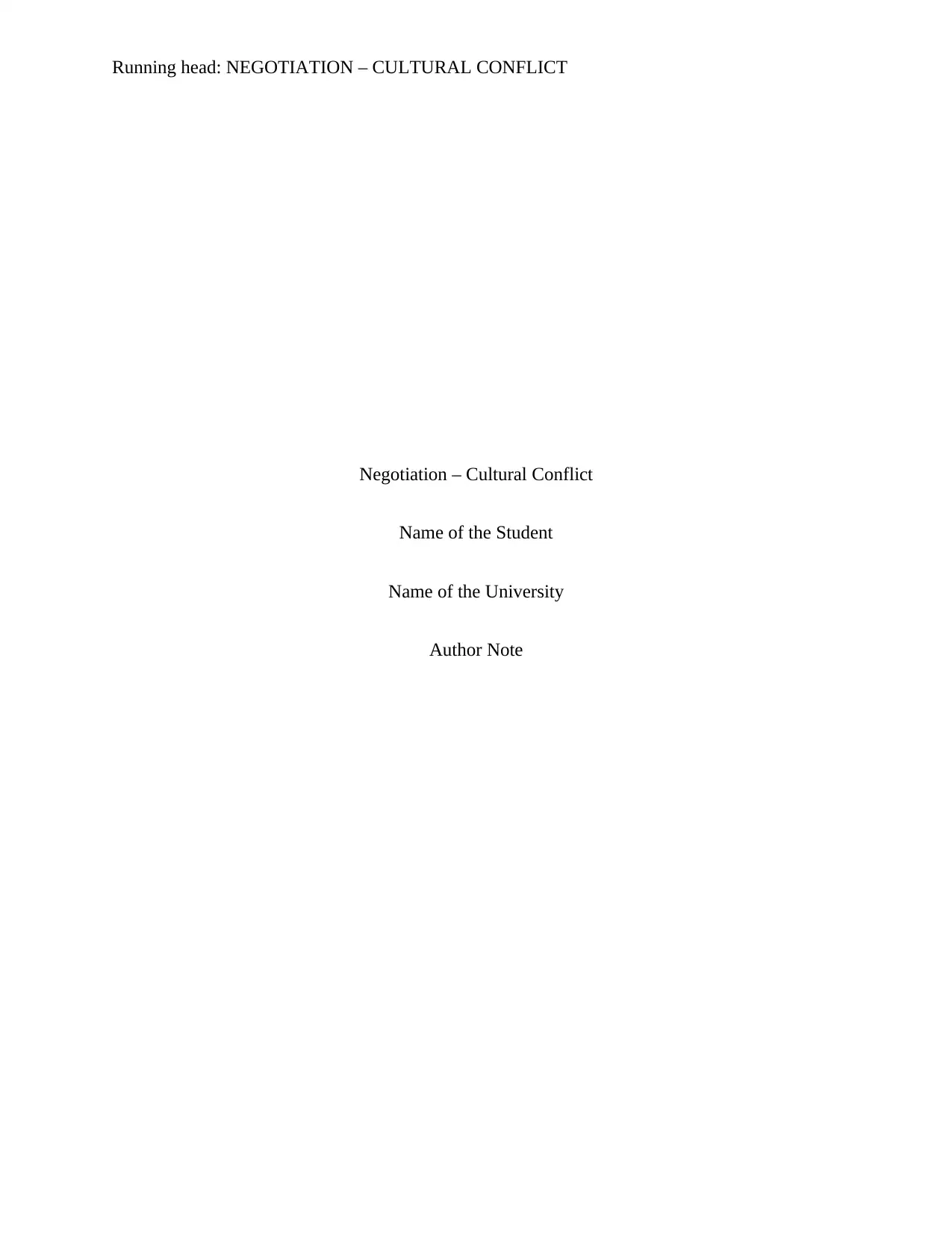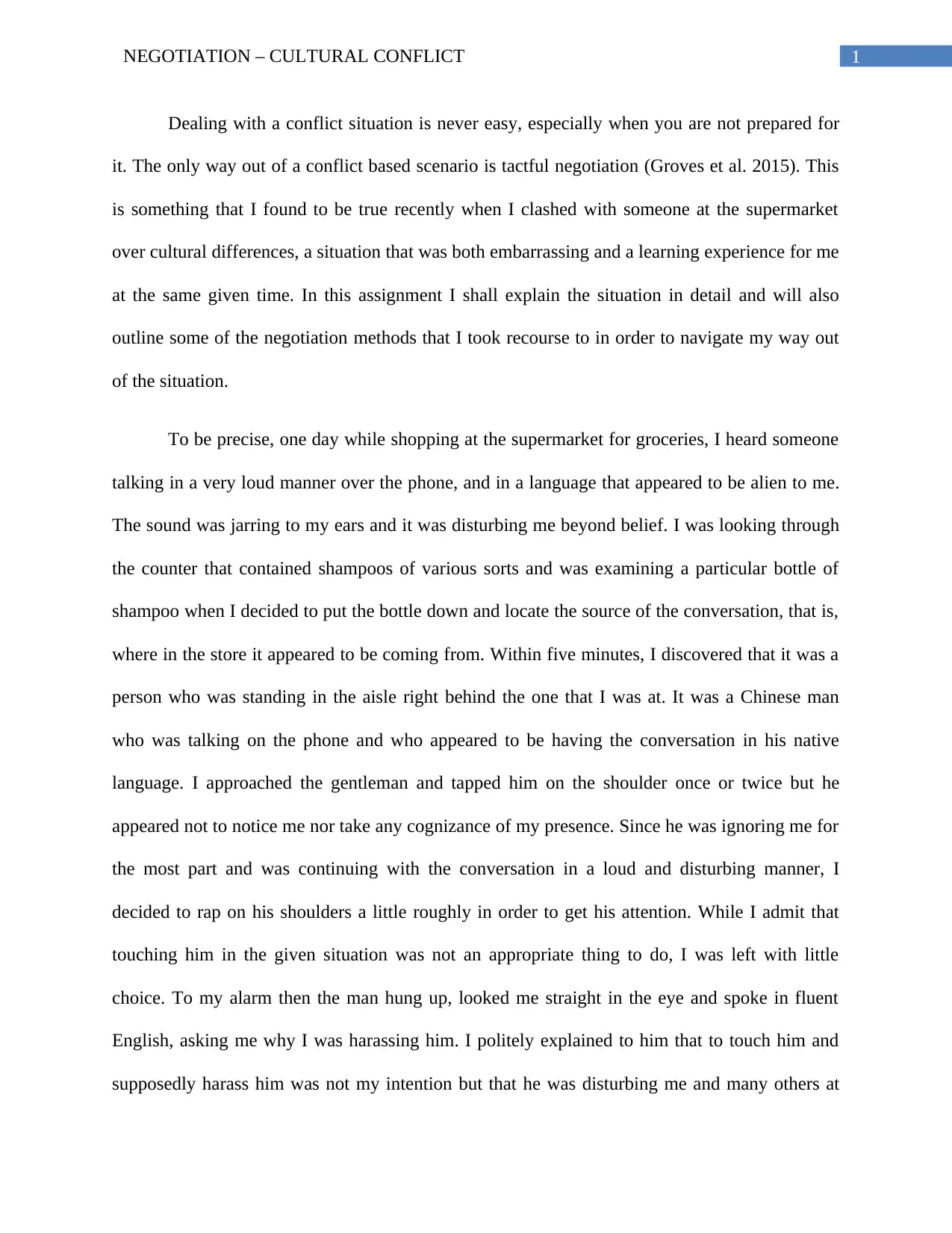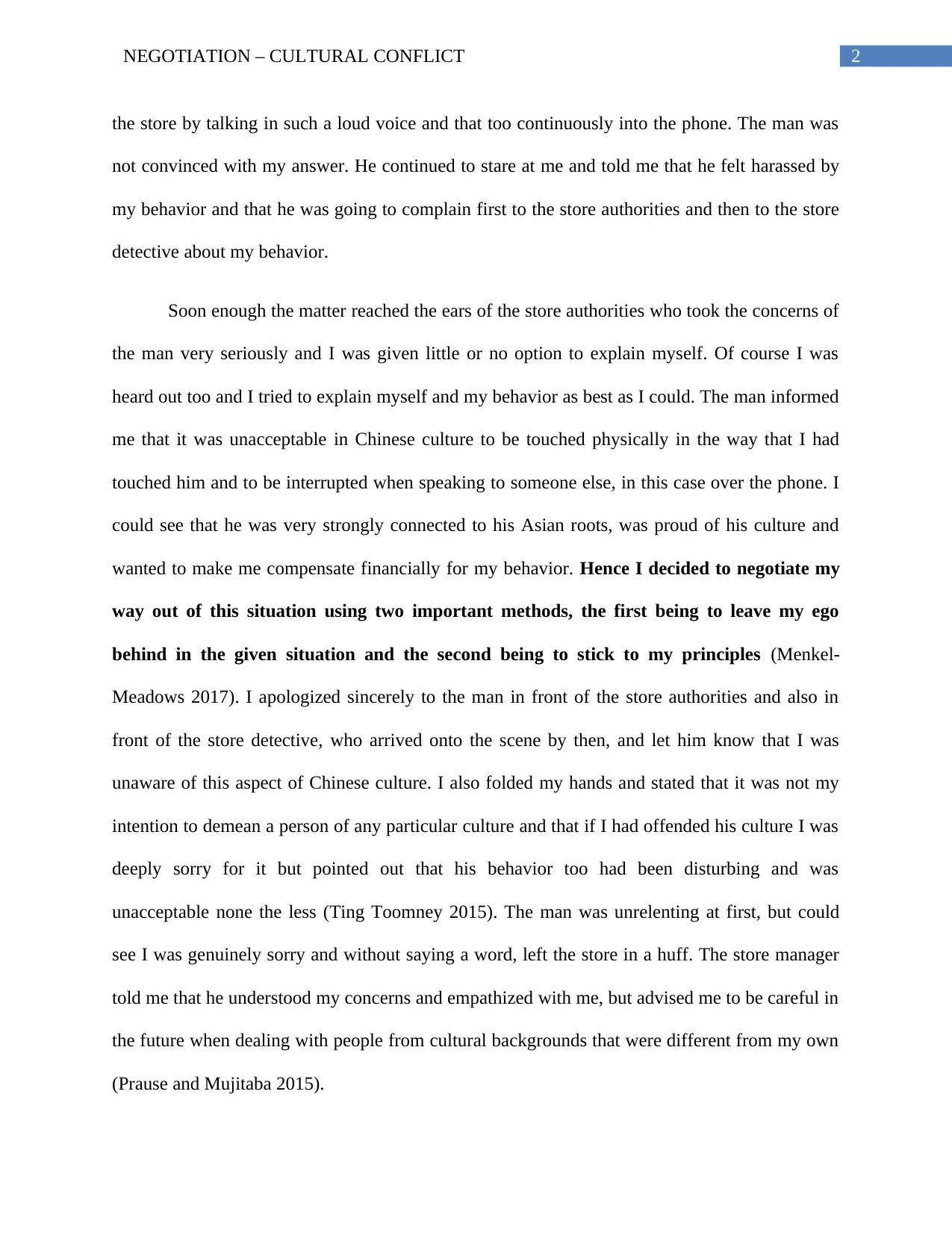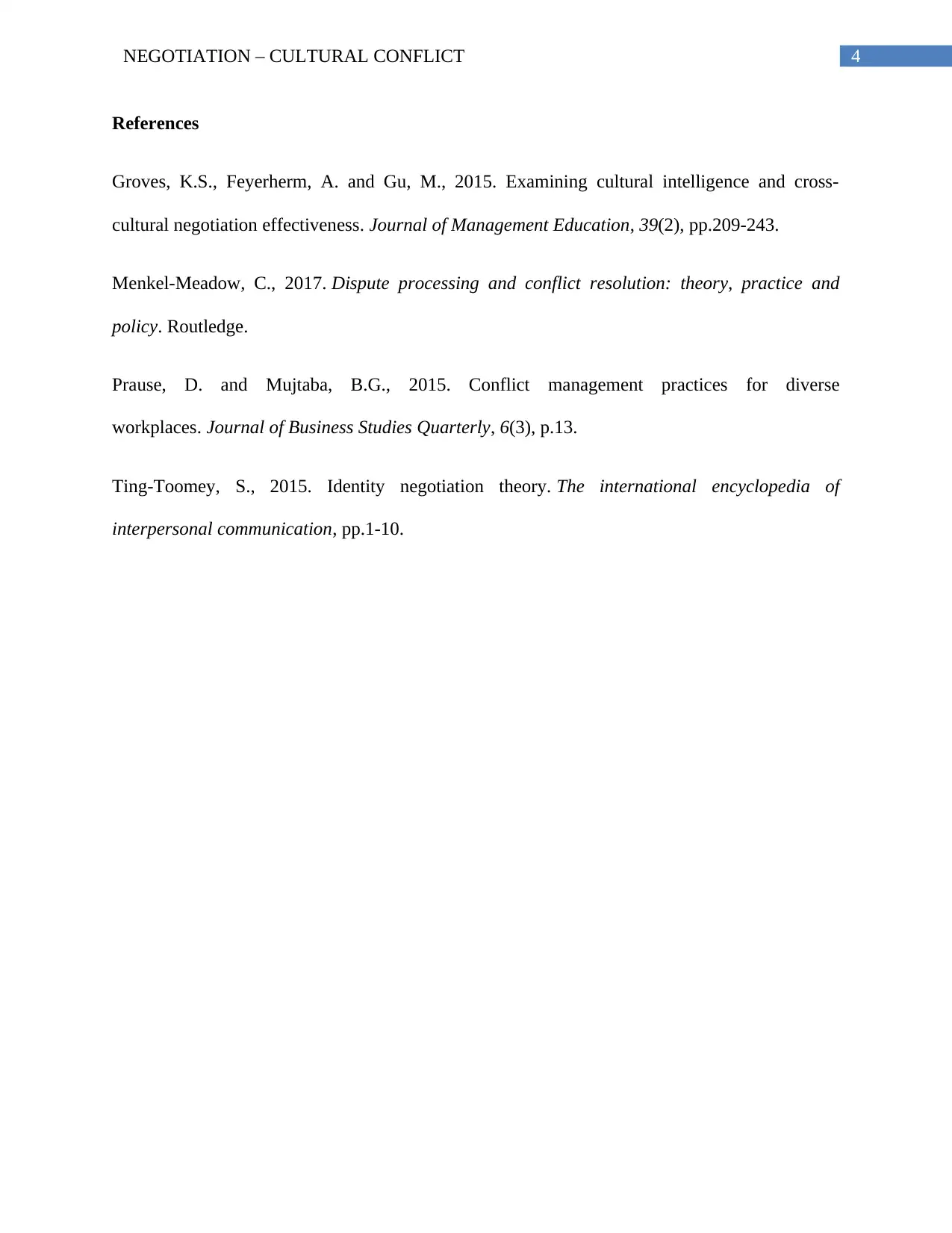Negotiation: Cultural Conflict and a Supermarket Encounter Analysis
VerifiedAdded on 2022/09/30
|5
|991
|452
Report
AI Summary
This report details a student's experience with a cultural conflict that arose during a supermarket visit. The student encountered a Chinese man speaking loudly on the phone, leading to a confrontation due to differing cultural norms regarding physical touch and interruption. The situation escalated, involving store authorities. The student navigated the conflict by prioritizing apology and adhering to principles, ultimately achieving a positive resolution. The report analyzes the negotiation methods employed, emphasizing the importance of empathy, cultural awareness, and adapting communication styles to resolve cross-cultural misunderstandings effectively. The student highlights the significance of understanding cultural nuances to avoid conflict and foster positive interactions in diverse settings. The report also references relevant academic literature on negotiation, cultural intelligence, and conflict management to support the analysis.
1 out of 5






![[object Object]](/_next/static/media/star-bottom.7253800d.svg)